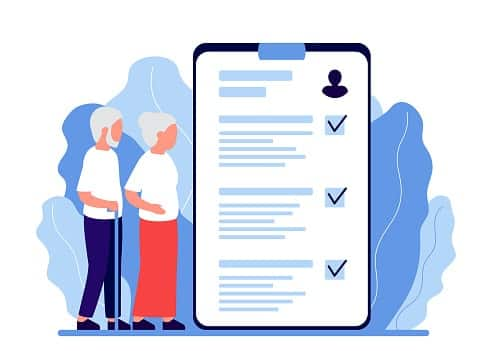Types of health insurance plans
Here are the details on the five common health plan types and how each works, including provider networks and how to get specialist referrals in each plan. Each of these may be employer-sponsored or may be private health plans.
Preferred Provider Organization (PPO)
A PPO offers the widest range of options for getting care of any plan. Here are a few highlights:
- A primary care physician is not required.
- You don't have to get referrals to see a specialist.
- Provider networks are usually larger, so you have more doctors to choose from.
- PPOs allow you to receive both in-network and out-of-network care, so you can see any doctor you want.
A few things to know about PPOs:
- Premiums are higher than other plans, sometimes more than double the cost of a health maintenance organization (HMO) or high-deductible health plan (HDHP).
- Out-of-network care has higher deductibles and copays.
PPOs are a popular choice with employer-sponsored plans where the employer covers a portion of the premium.
Health Maintenance Organization (HMO)
HMOs cost less than a PPO because they place more limits on how you access care. Here are a few of the highlights:
- Care is provided only by the health plan’s network of doctors and hospitals.
- You will have a primary care physician (PCP) who is in charge of coordinating your care.
- Premiums are lower thanks to the more controlled nature of the network and access to care.
A few important things to know about HMOs:
- Out-of-network care is not covered except for an emergency.
- Referrals are needed from your PCP to see a specialist.
- In-network care is often limited to a specific geographical area.
HMOs keep costs lower by limiting the network and requiring referrals for specialists. You can expect both lower premiums and often lower coinsurance amounts.
Exclusive Provider Organization (EPO)
An EPO is similar to an HMO in that it has a limited network but has a few key differences. Here are some key highlights:
- Care is provided by a local (sometimes national, depending on the plan) network.
- A PCP is required, but you don’t always need a referral to see a specialist.
- Premiums are lower than with a PPO.
Here are a few things to be aware of:
- Out-of-network care is not covered unless it’s an emergency.
- Deductibles may be higher with this type of plan.
- EPOs tend to be a little more costly than HMOs.
Point of Service (POS)
POS plans fall somewhere between an HMO and a PPO plan. Here are the key points:
- A PCP manages your healthcare and provides referrals to specialists.
- You can see an out-of-network specialist, and the plan will cover more of the cost if your PCP refers you.
- There is no deductible for in-network care, and copays are generally low.
There are a few more things you need to know about a POS plan:
- If you see an out-of-network doctor, you must file the claim paperwork yourself.
- You’ll pay more if you don’t have a PCP referral to an out-of-network doctor.
- Premiums are higher than with an HMO but still lower than a PPO plan.
High-Deductible Health Plan (HDHP)
An HDHP, as the name implies, has a higher deductible than other health plans. These plans are designed for people who don’t anticipate many medical needs and want the most affordable healthcare plan. Here are a few important things to know:
- Premiums are lower than any other type of plan.
- It can be either an HMO or a PPO plan, so networks vary.
- You can save money pre-tax in a health savings account (HSA) to pay healthcare costs.
- Your employer may provide an HSA contribution as a benefit to you.
Here are some other things you need to consider before choosing an HDHP:
- Deductibles are much higher than average.
- Only preventative care is exempt from the deductible; you’ll have to pay for all other care until the deductible is met.
- After the deductible is met, you will still have to pay a coinsurance amount.
How to pick the right health insurance plan
The right health insurance plan depends on many factors, including your financial situation and health status. Before you buy a health insurance plan, you should review the past few years of your healthcare services, as well as the healthcare provided to your spouse and family.
Then, think ahead to the next year. Think about your own and your family's health situations, healthcare use, prescription drugs, and whether you have the expendable income to pay out-of-pocket costs.
Here are a few questions to ask yourself:
- Would I rather pay high premiums or potentially higher out-of-pocket costs?
- Can I afford a high deductible?
- Would I rather have a limited network of providers or be able to get my healthcare from more physicians?
- Are my current healthcare providers part of the plan's provider network?
- Do I mind getting a referral to see a specialist?
Once you answer those questions, you will know what type of health insurance plan is best for you. Make sure you compare health insurance plans to make the right choice.
How do I know what type of health insurance I have?
If you’re unsure what type of health plan you have, check your insurance card. It should provide the plan’s name, including the type. If not, call your insurance company to ask about your coverage.
You can contact HR for assistance if you get your health insurance through your employer.
What coverage do all health insurance plans include?
All ACA health insurance plans must cover "essential health benefits." These covered benefits include:
- Outpatient care
- Emergency care
- Hospitalization
- Pregnancy and newborn care
- Mental health and substance abuse services
- Prescription drugs
- Rehabilitation services
- Lab tests
- Preventive and wellness services
- Dental and vision care for children
Essential health benefits provide a coverage baseline for all plans. However, there are still many variations of health insurance plans depending on plan type, deductibles, copays, out-of-pocket costs and provider networks.
You can find out the specifics about each plan offered by reviewing the Summary of Benefits and Coverage on each plan's website. Your employer or the ACA marketplace should also provide side-by-side comparisons of available plans.
Health insurance finder tool

COBRA
Learn more about COBRA
How much is your annual household income?
How many members are in your household?
Medicare
Medicare costs vary depending on which option you choose.
Learn more about Medicare costs.
Medicaid

Parent's employer-sponsored health insurance

Spouse's employer-sponsored health insurance

Employer-sponsored health insurance

Preferred-provider Organization (PPOs)
Preferred-provider organization (PPOs) plans are the most common type of
employer-based health plan. PPOs have higher premiums than HMOs and HDHPs, but
those added costs offer you flexibility. A PPO allows you to get care anywhere
and without primary care provider referrals. You may have to pay more to get
out-of-network care, but a PPO will pick up a portion of the costs.
Find out more about the differences between plansHealth maintenance organization (HMO)
Health maintenance organization (HMO) plans have lower premiums than PPOs.
However, HMOs have more restrictions. HMOs don't allow you to get care outside
of your provider network. If you get out-of-network care, you'll likely have to
pay for all of it. HMOs also require you to get primary care provider referrals
to see specialists.
Find out more about the differences between plansHigh-deductible health plans (HDHPs)
High-deductible health plans (HDHPs) have become more common as employers look
to reduce their health costs. HDHPs have lower premiums than PPOs and HMOs, but
much higher deductibles. A deductible is what you have to pay for health care
services before your health plan chips in money. Once you reach your deductible,
the health plan pays a portion and you pay your share, which is called
coinsurance.
Find out more about the differences between plansExclusive provider organization (EPO)
Exclusive provider organization (EPO) plans offer the flexibility of a PPO with
the restricted network found in an HMO. EPOs don't require that members get a
referral to see a specialist. In that way, it's similar to a PPO. However, an
EPO requires in-network care, which is like an HMO.
Find out more about the differences between plans
Learn more about individual insurance plans














